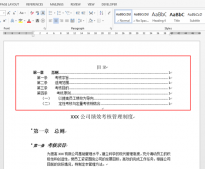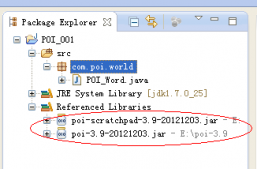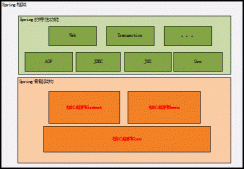本文实例为大家分享了java随机数生成代码,供大家参考,具体内容如下
|
1
2
3
4
5
6
7
8
9
10
11
12
13
14
15
16
17
18
19
20
21
22
23
24
25
26
27
28
29
30
31
32
33
34
35
36
37
38
39
40
41
42
43
44
45
46
47
48
49
50
51
52
53
54
55
56
57
58
59
60
61
62
63
64
65
66
67
68
69
70
71
72
73
74
75
76
77
78
79
80
81
82
83
84
85
86
87
88
89
90
91
92
93
94
95
96
97
98
99
100
101
102
103
104
105
106
107
108
109
110
111
112
113
114
115
116
117
118
119
120
121
122
123
124
125
126
127
128
129
130
131
132
133
134
135
136
137
138
139
140
141
142
143
144
145
146
147
148
149
150
151
152
153
154
155
156
157
158
159
|
package com.gonvan.common.utils; import java.util.*; /** * 随机数工具 * * @author yuerzm * */public final class LotteryAliasMethod { /** * The random number generator used to sample from the distribution. */ private final Random random; /** * The alias tables. */ private final int[] alias; /** * The probability tables. */ private final double[] probability; /** * Constructs a new AliasMethod to sample from a discrete distribution and * hand back outcomes based on the probability distribution. * <p/> * Given as input a list of probabilities corresponding to outcomes 0, 1, * ..., n - 1, this constructor creates the probability and alias tables * needed to efficiently sample from this distribution. * * @param probabilities * The list of probabilities. */ public LotteryAliasMethod(List<Double> probabilities) { this(probabilities, new Random()); } /** * Constructs a new AliasMethod to sample from a discrete distribution and * hand back outcomes based on the probability distribution. * <p/> * Given as input a list of probabilities corresponding to outcomes 0, 1, * ..., n - 1, along with the random number generator that should be used as * the underlying generator, this constructor creates the probability and * alias tables needed to efficiently sample from this distribution. * * @param probabilities * The list of probabilities. * @param random * The random number generator */ public LotteryAliasMethod(List<Double> probabilities, Random random) { /* Begin by doing basic structural checks on the inputs. */ if (probabilities == null || random == null) throw new NullPointerException(); if (probabilities.size() == 0) throw new IllegalArgumentException("Probability vector must be nonempty."); /* Allocate space for the probability and alias tables. */ probability = new double[probabilities.size()]; alias = new int[probabilities.size()]; /* Store the underlying generator. */ this.random = random; /* Compute the average probability and cache it for later use. */ final double average = 1.0 / probabilities.size(); /* * Make a copy of the probabilities list, since we will be making * changes to it. */ probabilities = new ArrayList<Double>(probabilities); /* Create two stacks to act as worklists as we populate the tables. */ Deque<Integer> small = new ArrayDeque<Integer>(); Deque<Integer> large = new ArrayDeque<Integer>(); /* Populate the stacks with the input probabilities. */ for (int i = 0; i < probabilities.size(); ++i) { /* * If the probability is below the average probability, then we add * it to the small list; otherwise we add it to the large list. */ if (probabilities.get(i) >= average) large.add(i); else small.add(i); } /* * As a note: in the mathematical specification of the algorithm, we * will always exhaust the small list before the big list. However, * due to floating point inaccuracies, this is not necessarily true. * Consequently, this inner loop (which tries to pair small and large * elements) will have to check that both lists aren't empty. */ while (!small.isEmpty() && !large.isEmpty()) { /* Get the index of the small and the large probabilities. */ int less = small.removeLast(); int more = large.removeLast(); /* * These probabilities have not yet been scaled up to be such that * 1/n is given weight 1.0. We do this here instead. */ probability[less] = probabilities.get(less) * probabilities.size(); alias[less] = more; /* * Decrease the probability of the larger one by the appropriate * amount. */ probabilities.set(more, (probabilities.get(more) + probabilities.get(less)) - average); /* * If the new probability is less than the average, add it into the * small list; otherwise add it to the large list. */ if (probabilities.get(more) >= 1.0 / probabilities.size()) large.add(more); else small.add(more); } /* * At this point, everything is in one list, which means that the * remaining probabilities should all be 1/n. Based on this, set them * appropriately. Due to numerical issues, we can't be sure which * stack will hold the entries, so we empty both. */ while (!small.isEmpty()) probability[small.removeLast()] = 1.0; while (!large.isEmpty()) probability[large.removeLast()] = 1.0; } /** * Samples a value from the underlying distribution. * * @return A random value sampled from the underlying distribution. */ public int next() { /* Generate a fair die roll to determine which column to inspect. */ int column = random.nextInt(probability.length); /* Generate a biased coin toss to determine which option to pick. */ boolean coinToss = random.nextDouble() < probability[column]; /* Based on the outcome, return either the column or its alias. */ return coinToss ? column : alias[column]; } } |
以上就是本文的全部内容,希望对大家的学习有所帮助。














